Muse and angel
Oil on canvas, cm 40 x 29
With frame, cm 57 x 47
Signed in the lower right: "W-Bouguereau"
The work under consideration, an oil on canvas referring to the nineteenth century depicting a Muse with Angel, can be referred to the hand of a French artist gravitating around the figure of William-Adolphe Bouguereau, who probably used to sign himself as the master, in tribute.
William-Adolphe Bouguereau was born in La Rochelle on 30 November 1825 to a modest family of wine and oil merchants. He started his commercial career in the family business, thanks to his paternal uncle Eugène, and was introduced to French literature, the Bible and love of nature, learning the first rudiments of drawing with the painter Louis Sage, a former pupil of Jean-BaptisteAuguste-Dominique Ingres. Given the talent which the young man showed from an early age, his father allowed him to pursue an artistic career by enrolling him in the "Municipal School of Drawing and Painting" in Bordeaux under the guidance of local artist Charles Marionneau: during this early period, To earn a living, Bouguereau designed labels for jam and fruit preserves to be printed in chromo-lithography.
He became the best of his class at twenty in March 1846, and moved to Paris to attend courses at the Paris School of Fine Arts, entering the studio of François-Édouard Picot: to perfect himself in drawing the human body, he attended anatomy classes, He also studied archaeology, historical customs and customs, classical literature (Ovid and Virgil) and Greek mythology, whose themes and episodes would often inspire his work. In 1848 he attempted the competition for the Prix de Rome, coming second in both cases, behind Gustave Boulanger. He finally returned in 1850 winning the first prize, consisting of a study stay of three years at Villa Medici in Rome: during this period Bouguereau was deeply involved in the studies of Italian Renaissance painting (his favorite artist was Raphael) and the works of Greek, Etruscan and Roman antiquity. He also visited other cities in southern Italy such as Naples, Capri, Amalfi and Pompeii. Back in Paris, he began his successful and controversial career as an academic painter, which he carried on with extreme rigor and stylistic consistency, without any compromise, while around him were stirring the first ferments of impressionist innovation. In 1866, Bouguereau consolidated his fame and career: the famous art dealer Paul Durand-Ruel decided to take care of him and promote his works, allowing them to be exhibited at the famous Salon de Paris. This partnership bore great fruit: the sales of his paintings were multiplied thanks to private collectors (some works were even purchased by Napoleon III for the Tuileries Palace).
In 1875, Bouguereau was called to teach painting at the Académie Julian, while he was elected a life member of the Academy of Fine Arts (taking over the presidency of both in 1888). From that year on, his works, regardless of subject, were regularly exhibited at the Salon every year for the rest of his career.
The support of the new emerging bourgeois class to the art world was a way to acquire some of its prestige, indicating a desire for ascent also cultural. The interest in the academic current, considered of quality and high degree of finishing, remained very high: this consideration led academism to adapt more and more to the desires of buyers, varying themes, with scenes of costumes, of exotic landscapes and sometimes a spicy eroticism, representing an idealized seductive beauty with glossy surfaces, an accentuated sentimentalism, decorative effects and detailed finishes. With the canvas under consideration, the artist, inspired by the master, dedicated much of his energy to satisfy the taste of the new bourgeois public, through a strong sense of idealization and his identification of art with beauty.
The object is in good condition

































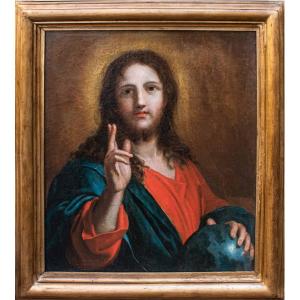


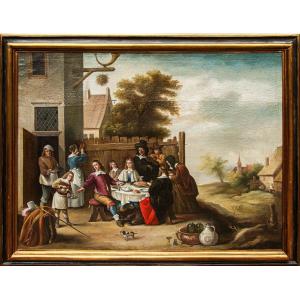


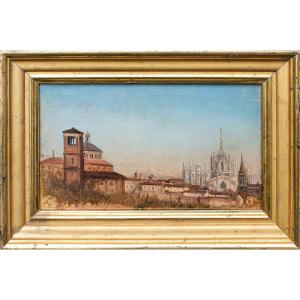


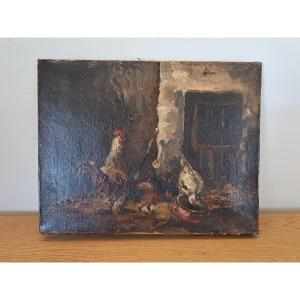
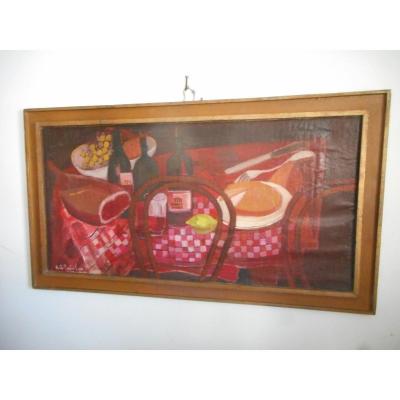

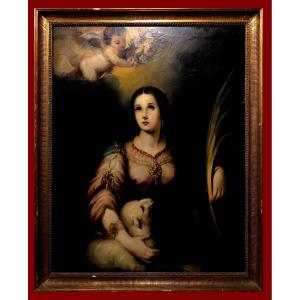




 Le Magazine de PROANTIC
Le Magazine de PROANTIC TRÉSORS Magazine
TRÉSORS Magazine Rivista Artiquariato
Rivista Artiquariato